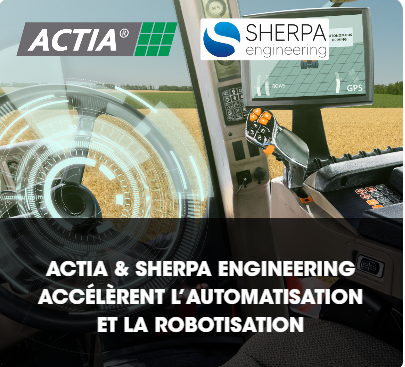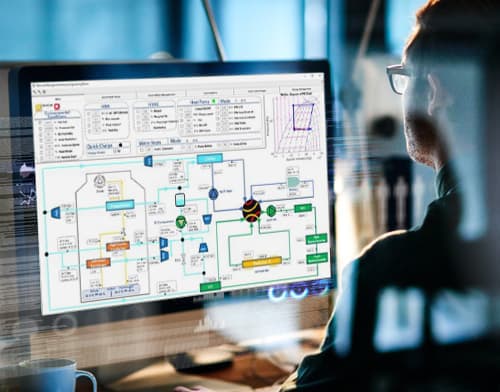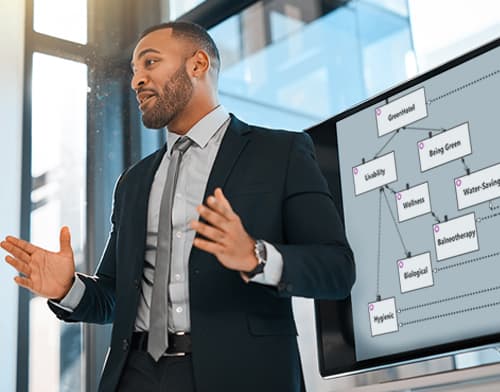Accélérez vos innovations – Sécurisez vos développements
ingénierie système, modélisation multiphysique, contrôle-commande, intelligence artificielle
C’est avec engagement, savoir-faire et pragmatisme que nous intervenons
auprès des plus grands groupes industriels.
PARMI NOS ENGAGEMENTS
Booster votre innovation
grâce à notre investissement massif en R&D et notre implication dans de nombreux projets de recherche et pôles de compétitivité
Vous faire gagner du temps
pour le développement de vos projets grâce à la capitalisation de nos expériences et savoir-faire et la richesse de nos bibliothèques métiers
Cultiver le bien-être au travail
pour permettre à nos collaborateurs donner le meilleur d’eux-mêmes, de progresser et de s’épanouir en trouvant un juste équilibre personnel
ACTUALITÉ

ACTIA et SHERPA Engineering : Un partenariat au service de la robotique agricole de nouvelle génération
ACTIA et SHERPA Engineering annoncent un partenariat stratégique visant à intégrer la brique technologique de navigation autonome de SHERPA sur le calculateur haute performance HPC ACTIA. Cette collaboration vise à développer une solution unique sur le marché : un HPC robuste et industrialisable...



